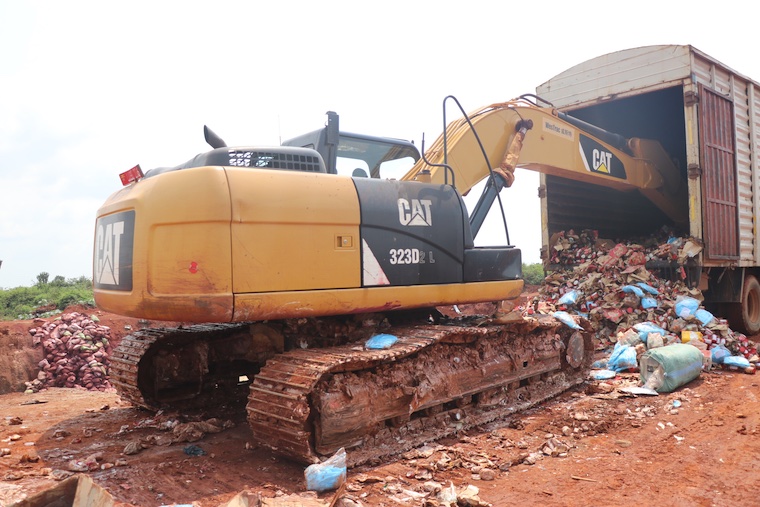URA destroys contraband worth Shs 1bn
Recently, the Uganda Revenue Authority (URA) cautioned the business community against the smuggling of goods.
URA issued the warning after it destroyed more than 180 tonnes of contraband in Nakasongola. The contrabands included cosmetics, used underwear garments, beers, wines and other products. The contraband was impounded at various border points and markets.
Canon Milton Rahuka, the manager, customs in charge of warehousing, said they have destroyed 180 tonnes of contraband worth Shs 1 billion, and they will destroy more than 200 tonnes because they still have other products like computers, cigarettes, expired soap, and fridges in the store.
“Our work is not only to destroy contrabands as customs but also to collect revenue, facilitate trade and protect society from harmful products. We destroyed underwear, wines and cosmetics, which have hydroquinone substances with mercury. These cause cancer, among other diseases,” Rahuka said.
He explained that the enforcement teams all over the country impound contraband whenever they are smuggled into the country, especially along the borders of the DRC and South Sudan. The contraband is then assembled at a central warehouse of the URA in Nakawa.
“The East Africa and Customs Management Act empowers the commissioner of customs to destroy contraband, and the destruction takes place in gazetted areas such as Nakasongola industrial park, where there are incinerators, and procured services to do the destruction by an accredited company, Luwero Industries, while procured entity Rugarwana Industries do the transportation,” he noted.
Rahuka said the law prohibits the importation of used undergarments, and as such they are regarded as contraband and are prohibited from being imported. Enforcement and customs empower them to seize them and, thereafter, the commissioner orders for their destruction.
Ian Mukisa, the supervisor of Luwero Industries, Nakasongola, said: “We received a bulk of contraband, and this particular one, we destroyed it by crashing with the excavator.”
He said “there are several methods of destruction, which include incineration. This involves direct burning; direct landfilling; evaporation liquids, which we only pour if they are not toxic; and neutralization of acids and other toxic items. We neutralize them according to their level of toxicity.”
Mukisa noted that bulkiness and sensitivity determine the landfilling method. The sensitivity is that URA wanted them to be crushed, once and for all. So, they don’t need to temporality store and sort them because they have plastics and other items that need sorting according
to the actual waste management procedures.
However, Mukisa added that because they have seen the sensitivity and bulkiness, it is the reason why they crashed them according to the needs of their client.

